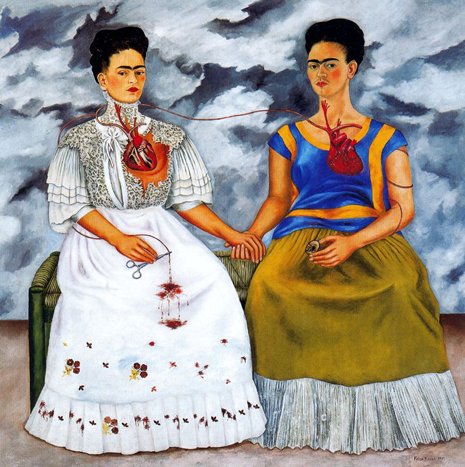Artists aren’t always what we think they are
14 January 2008 4 Comments
Over the last year or so I’ve come to realize how different our perception of artists is from reality. The film Frida, about the life of painter Frida Kahlo, sparked this revelation. I remember the first time I saw a Kahlo painting, in a poetry writing class during college. I was put off at the time, to say the least, even as an art student in a public university. Had I at the time been given some background information on the artist, her paintings would have made sense. Their visceral nature would have been tempered with the knowledge that she suffered physically in many of the ways she depicted on the canvas.

A week or so ago I wrote briefly about Makoto Fujimura’s recent blog post dealing with Vincent van Gogh. Normally, van Gogh is regarded as a modern artistic genius, afflicted with stereotypical artist-slash-genius afflictions; in other words, he was kinda crazy. And then there’s that bit about him cutting off his ear.
What we don’t know — even me with an art degree — is that he came from a very religious family. He wanted to be a priest, but was denied the priesthood by the Dutch church for being too uneducated (he only knew five languages). He was sent as a missionary to a mining community in Belgium. He likely suffered from some unidentified mental illness, which explains the mood swings that caused people to think of him as crazy. And his style, his application of paint to the canvas, was a reflection of his appreciation for Japanese wood cuts.
I took five art history classes as an undergrad: Art Historty Survey I and II, History of Photography, Roman Art and Archeology and History of Architecture. I never learned details like this, details that significantly influence how a person looks at a work of art. Yes, a painting or sculpture possesses merit in and of itself. We don’t need to know the personal history of the artist in order to say “That’s a good painting.” While such knowledge may not necessarily lend additional meaning to his individual pieces, such details do make a work of art infinitely more interesting.
“undefined mental illness” is usually code for bipolar before they had identified the mood disorder. Bipolar was discovered when some researchers or doctors gave some untreatable schizophrenic patients lithium and they were suddenly much better.
You might want to check out Simon Schama’s documentary Power of Art. It is phenomenal. (his History of Britain is pretty faboo too)
http://www.bbc.co.uk/arts/powerofart/
i also thought that van gogh’s application to the priesthood was rejected precisely because he lived with and spent his stipend on those to whom he was sent — but that wasn’t how they did things so he was rejected. it seems to me that rejection was a pretty major issue in his life, and perhaps that explains his rather intense attachments to those he did manage to connect with. it is odd that so much of the religious imagery and theological questioning in his letters and diaries is avoided when discussing his life and work. closer to home, it seems the same has happened with emily carr, canadian feminist painting icon — i wonder how the new, less edited diaries will be accepted? evidently her faith was a major factor in her artistc chices…
Isn’t it funny how we find the artwork we hate at one point in our life can suddenly become poignant and beautiful, perhaps even necessary to us at another?
I remember absolutely HATING Mondrian when I was an undergrad- what a fool I was! Also Duchamp. Now I find them both vital!
Pingback: Critiquing without cultivating a critical spirit « The Aesthetic Elevator